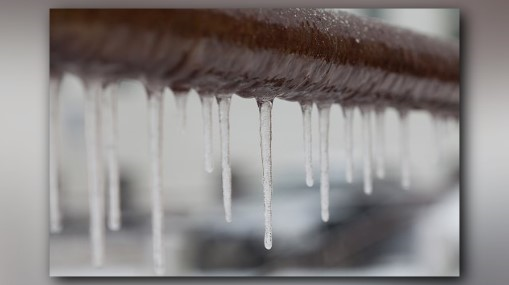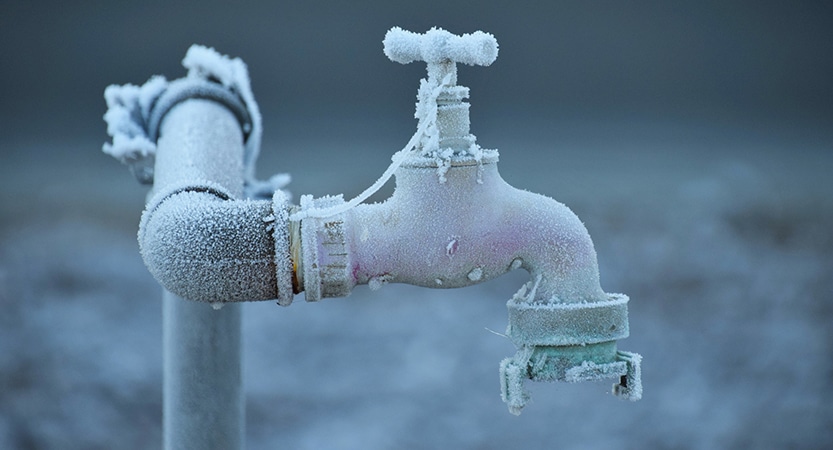Safeguarding Your Pipes from Cold Weather Issues: Key Strategies
Safeguarding Your Pipes from Cold Weather Issues: Key Strategies
Blog Article
They are making a number of good pointers related to Helpful Tips to Prevent Frozen Pipes this Winter overall in this article just below.

Cold weather can damage your plumbing, specifically by freezing pipelines. Below's just how to avoid it from occurring and what to do if it does.
Introduction
As temperature levels drop, the risk of icy pipes increases, potentially resulting in expensive repair services and water damages. Understanding just how to avoid icy pipelines is vital for home owners in cool environments.
Avoidance Tips
Protecting at risk pipes
Wrap pipelines in insulation sleeves or utilize warm tape to protect them from freezing temperatures. Concentrate on pipes in unheated or outside locations of the home.
Home heating methods
Maintain indoor spaces adequately heated, particularly areas with pipes. Open cupboard doors to allow cozy air to circulate around pipes under sinks.
Exactly how to identify frozen pipes
Search for lowered water circulation from faucets, unusual odors or sounds from pipes, and visible frost on exposed pipes.
Long-Term Solutions
Architectural adjustments
Think about rerouting pipelines far from exterior wall surfaces or unheated areas. Include extra insulation to attic rooms, basements, and crawl spaces.
Updating insulation
Purchase top quality insulation for pipes, attics, and walls. Proper insulation assists keep consistent temperature levels and minimizes the risk of frozen pipes.
Safeguarding Outside Plumbing
Garden tubes and outside faucets
Separate and drain pipes garden tubes prior to winter. Mount frost-proof spigots or cover outdoor faucets with protected caps.
Recognizing Frozen Pipes
What creates pipelines to ice up?
Pipelines freeze when subjected to temperatures listed below 32 ° F (0 ° C) for prolonged periods. As water inside the pipelines freezes, it broadens, putting pressure on the pipeline walls and potentially creating them to break.
Risks and damages
Frozen pipes can cause water supply disturbances, residential property damage, and costly fixings. Burst pipes can flood homes and trigger substantial structural damages.
Signs of Frozen Piping
Determining icy pipelines early can avoid them from rupturing.
What to Do If Your Pipes Freeze
Immediate activities to take
If you suspect icy pipelines, keep taps available to ease pressure as the ice thaws. Use a hairdryer or towels soaked in hot water to thaw pipes slowly.
Conclusion
Protecting against frozen pipes requires proactive measures and fast responses. By recognizing the causes, signs, and preventive measures, homeowners can shield their pipes during cold weather.
6 Proven Ways to Prevent Frozen Pipes and Protect Your Home
Disconnect and Drain Garden Hoses
Before winter arrives, start by disconnecting your garden hoses and draining any remaining water. Close the shut-off valves that supply outdoor hose bibs and leave the outdoor faucet open to allow any residual water to drain. For extra protection, consider using faucet covers throughout the colder months. It’s also important to drain water from any sprinkler supply lines following the manufacturer’s directions.
Insulate Exposed Pipes
Insulating your pipes is an effective way to prevent freezing. Pipe insulation is readily available at home improvement stores and is relatively inexpensive. Pay close attention to pipes in unheated areas such as the attic, basement, crawl spaces, or garage. Apply foam insulation generously to create a buffer against the cold. You can also wrap your pipes in heat tape or thermostat-controlled heat cables for added warmth.
Seal Air Leaks
Inspect your home for any cracks or openings that could let in cold air. Seal any holes around the piping in interior or exterior walls, as well as the sill plates where your home rests on its foundation. Additionally, make sure to keep your garage door closed unless you’re entering or exiting. Leaving it open creates a significant air leak that can lead to frozen pipes.
Allow Warm Air Circulation
During cold snaps, it’s essential to allow warm air to circulate evenly throughout your home. Leave interior doors ajar to promote better airflow. Open kitchen and bathroom cabinets to help distribute heat consistently around the rooms. If you have small children or pets, be sure to remove any household chemicals or potentially harmful cleaners from open cabinets for safety.
Let Faucets Drip
A small trickle of water can make a big difference in preventing ice formation inside your pipes. When temperatures drop significantly, start a drip of water from all faucets served by exposed pipes. This continuous flow helps prevent the water from freezing. Additionally, running a few faucets slightly can relieve pressure inside the pipes, reducing the chances of a rupture if the water inside does freeze.
https://choateshvac.com/6-proven-ways-to-prevent-frozen-pipes-and-protect-your-home/

I am just very serious about Preventing and dealing with frozen pipes and I hope you enjoyed the new page. Liked our write up? Please quickly share it. Help others find it. I praise you for being here. Return soon.
Schedule Appointment Now Report this page